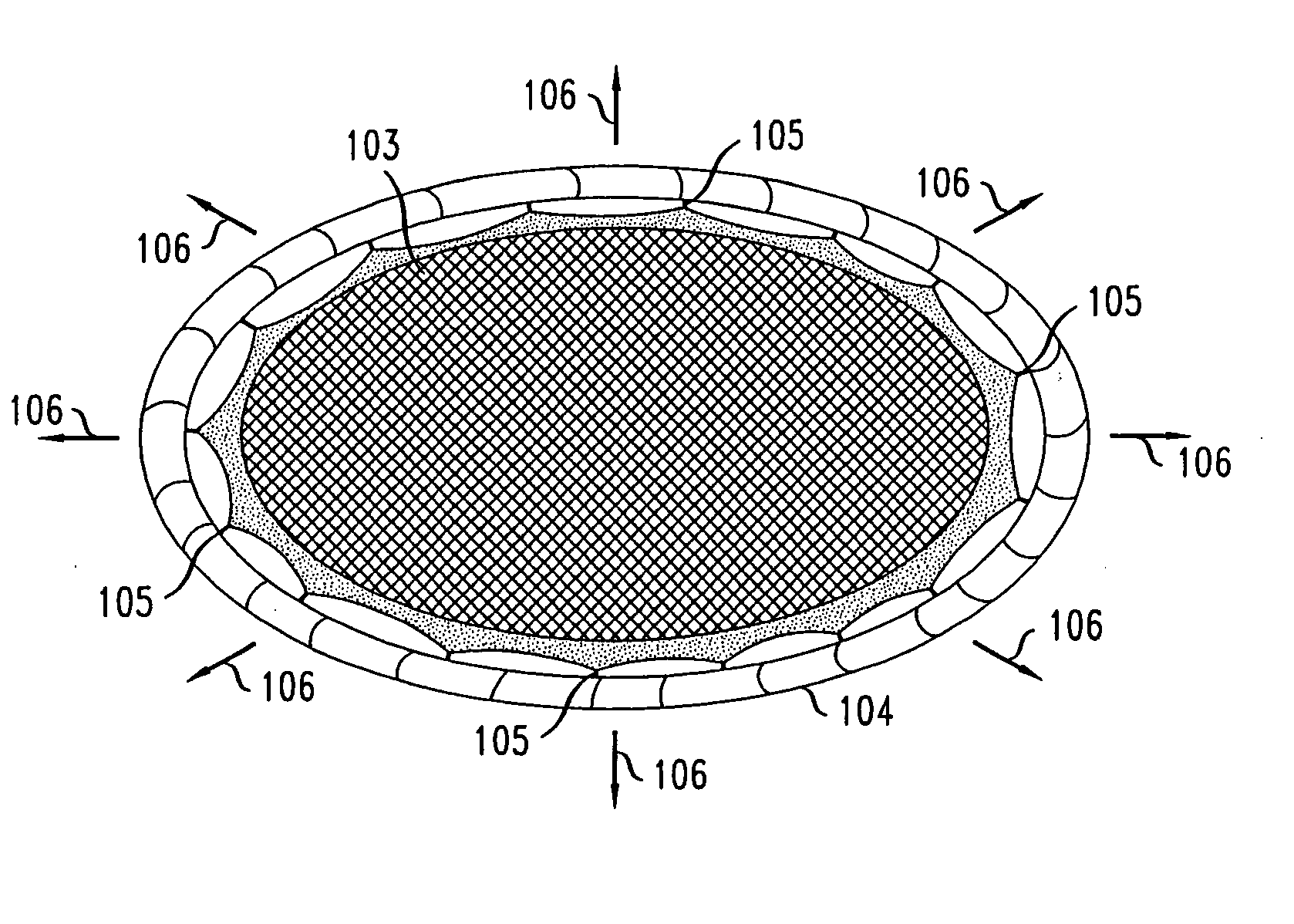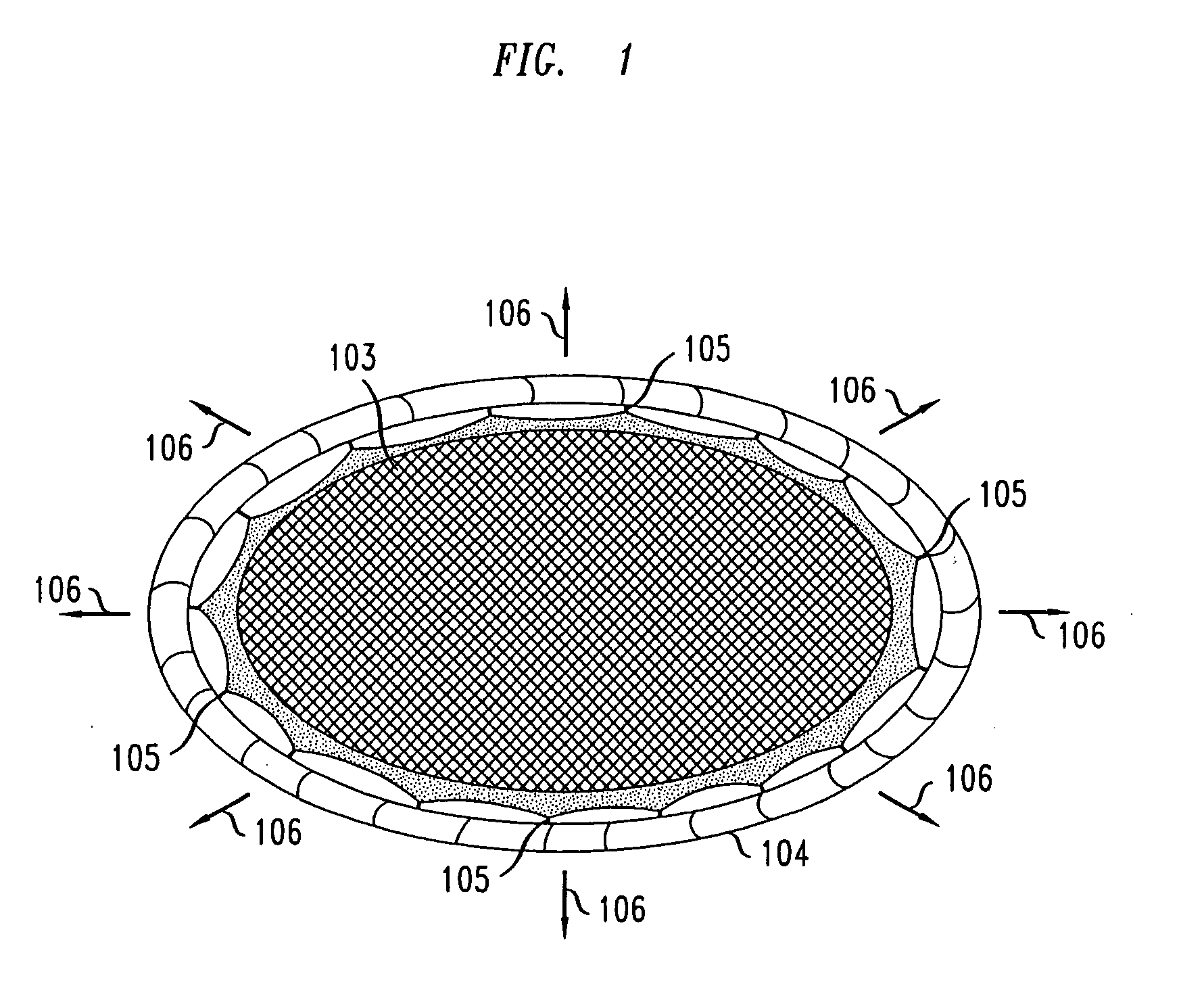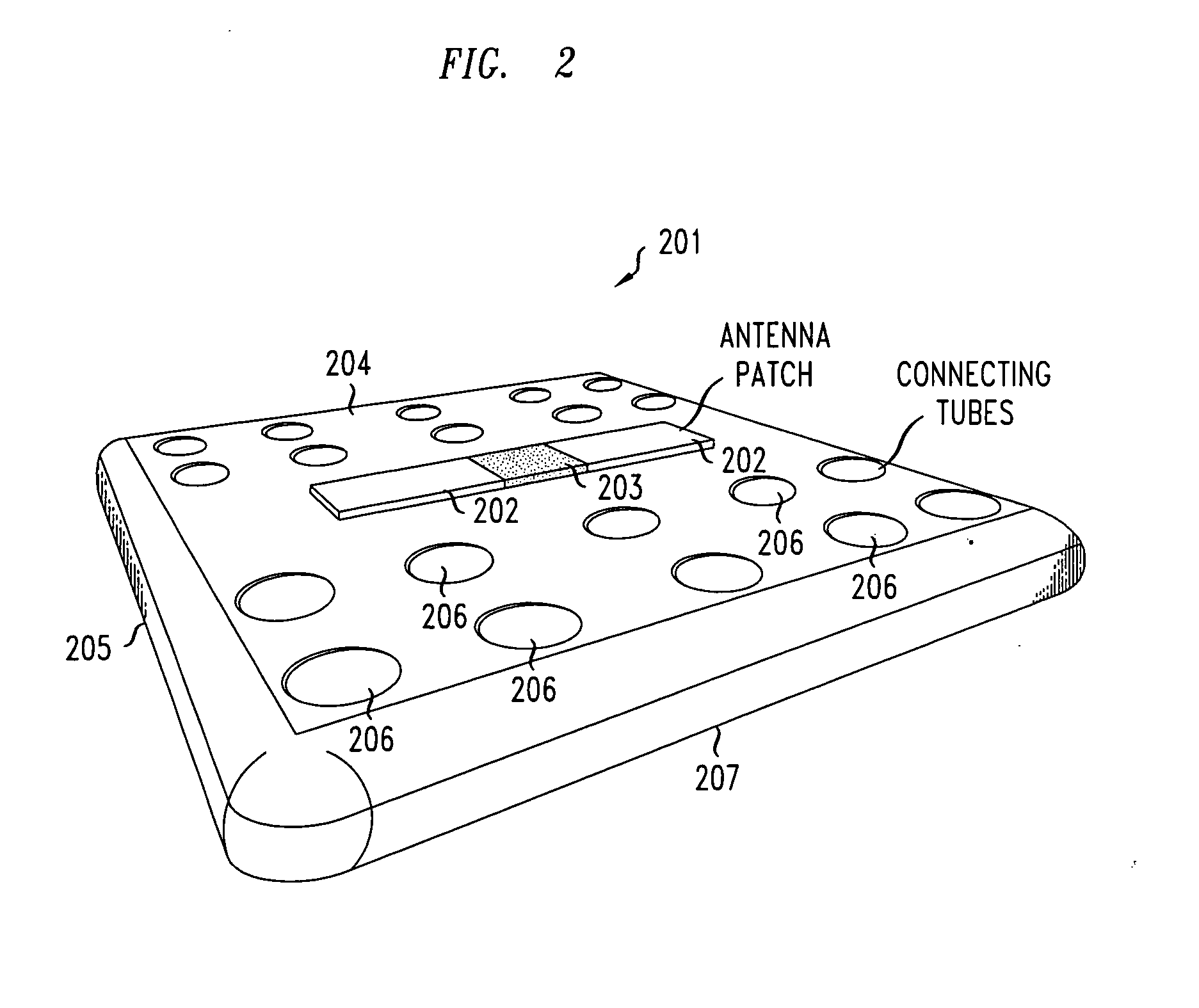Light-weight signal transmission lines and radio frequency antenna system
a radio frequency antenna and transmission line technology, applied in the direction of individually energised antenna arrays, collapsible antenna means, waveguides, etc., can solve the problems of increased fuel consumption, limited in certain regards, and relatively heavy antennas and associated supporting infrastructure, such as transmission lines, and achieve the effect of light weigh
- Summary
- Abstract
- Description
- Claims
- Application Information
AI Technical Summary
Benefits of technology
Problems solved by technology
Method used
Image
Examples
Embodiment Construction
[0013]FIG. 1 shows a prior lightweight antenna structure 101 useful in RF transmission systems. In that figure, structure 101 has an antenna 102 with multiple antenna elements arranged in an array, such as is used in a phased array antenna. In certain applications, it is advantageous for the array to be substantially flat. Hence, in this prior application, the array is attached to a membrane 103 that is, in turn, connected to inflatable circular tube 104 via attachments 105. The membrane and the tube are designed such that, when tube 104 is inflated, a substantially equal amount of force is applied to membrane 103 via attachments 105. This causes membrane 103 to stretch laterally in, for example, directions 106. When the membrane 103 is sized appropriately (depending in part upon the material used for membrane 103), the resulting tension applied to membrane 103 is such that the membrane, and hence antenna array 102, becomes substantially flat.
[0014]FIG. 2 shows an embodiment of a l...
PUM
 Login to View More
Login to View More Abstract
Description
Claims
Application Information
 Login to View More
Login to View More - R&D
- Intellectual Property
- Life Sciences
- Materials
- Tech Scout
- Unparalleled Data Quality
- Higher Quality Content
- 60% Fewer Hallucinations
Browse by: Latest US Patents, China's latest patents, Technical Efficacy Thesaurus, Application Domain, Technology Topic, Popular Technical Reports.
© 2025 PatSnap. All rights reserved.Legal|Privacy policy|Modern Slavery Act Transparency Statement|Sitemap|About US| Contact US: help@patsnap.com



